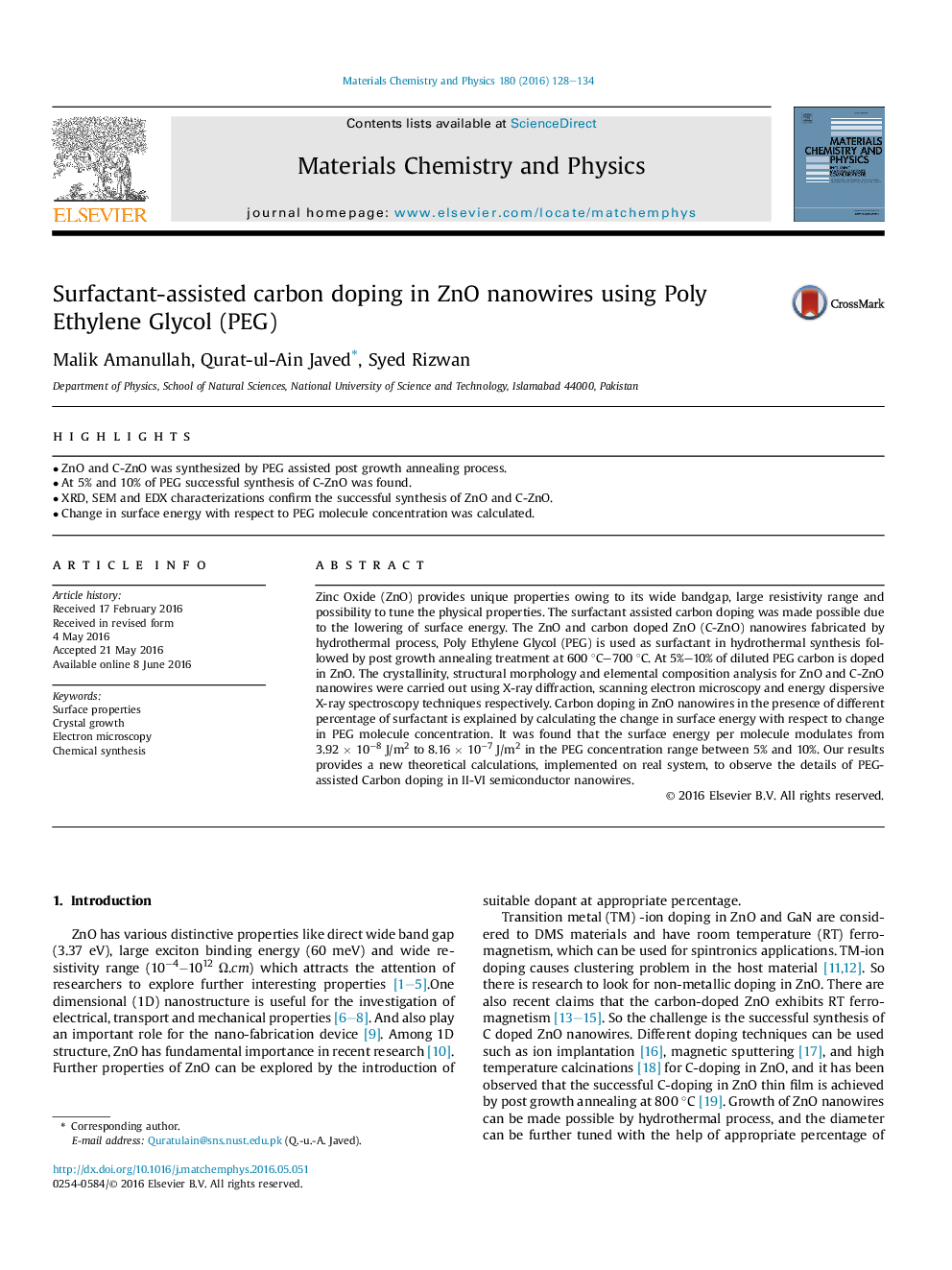| Article ID | Journal | Published Year | Pages | File Type |
|---|---|---|---|---|
| 1520518 | Materials Chemistry and Physics | 2016 | 7 Pages |
•ZnO and C-ZnO was synthesized by PEG assisted post growth annealing process.•At 5% and 10% of PEG successful synthesis of C-ZnO was found.•XRD, SEM and EDX characterizations confirm the successful synthesis of ZnO and C-ZnO.•Change in surface energy with respect to PEG molecule concentration was calculated.
Zinc Oxide (ZnO) provides unique properties owing to its wide bandgap, large resistivity range and possibility to tune the physical properties. The surfactant assisted carbon doping was made possible due to the lowering of surface energy. The ZnO and carbon doped ZnO (C-ZnO) nanowires fabricated by hydrothermal process, Poly Ethylene Glycol (PEG) is used as surfactant in hydrothermal synthesis followed by post growth annealing treatment at 600 °C–700 °C. At 5%–10% of diluted PEG carbon is doped in ZnO. The crystallinity, structural morphology and elemental composition analysis for ZnO and C-ZnO nanowires were carried out using X-ray diffraction, scanning electron microscopy and energy dispersive X-ray spectroscopy techniques respectively. Carbon doping in ZnO nanowires in the presence of different percentage of surfactant is explained by calculating the change in surface energy with respect to change in PEG molecule concentration. It was found that the surface energy per molecule modulates from 3.92 × 10−8 J/m2 to 8.16 × 10−7 J/m2 in the PEG concentration range between 5% and 10%. Our results provides a new theoretical calculations, implemented on real system, to observe the details of PEG-assisted Carbon doping in II-VI semiconductor nanowires.
